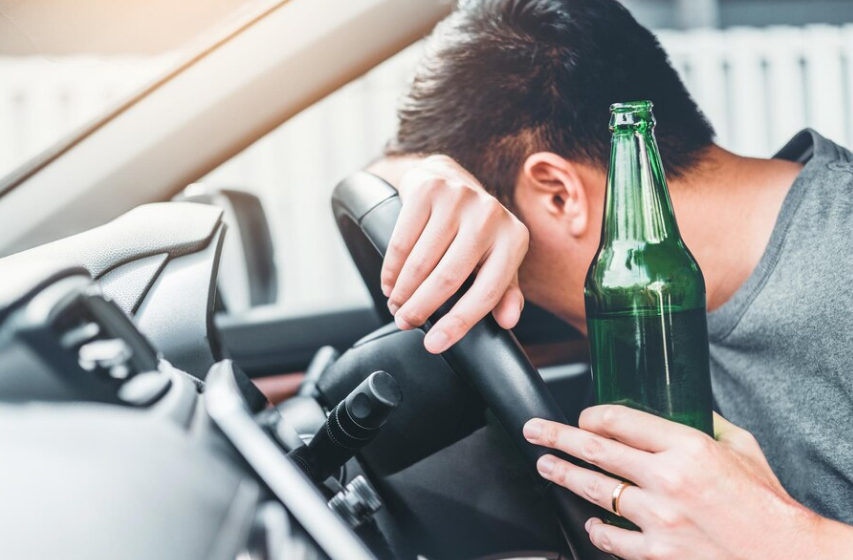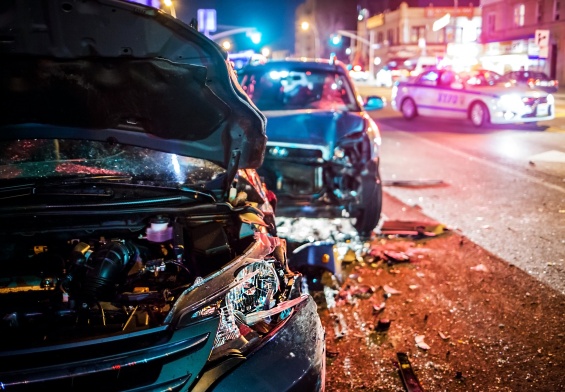Originally posted on: https://lawforlife.net/navigating-the-aftermath-of-drunk-driving-accidents.html
Drunk driving remains a significant public health hazard, causing thousands of deaths and injuries each year. Despite stringent laws and widespread awareness campaigns, the menace of drunk driving persists, leading to tragic accidents with far-reaching consequences. These incidents not only claim lives but also leave survivors and families grappling with physical, emotional, and financial turmoil. The statistics are sobering, with daily fatalities underscoring the urgent need for continued vigilance and preventive measures against this preventable tragedy.
The battle against drunk driving is multifaceted, involving law enforcement, legal frameworks, and community efforts to educate and deter potential offenders. In this blog, we delve into the grim statistics that highlight the severity of drunk driving accidents, the legal ramifications for those found guilty, and the crucial steps victims can take to navigate the aftermath of such devastating events. Understanding the scope of the problem and the resources available for recovery and justice is essential for victims and their families, as well as for society’s collective effort to curb this ongoing crisis.
The Grim Statistics of Drunk Driving
Drunk driving accidents are alarmingly common and often fatal, casting a long shadow over public safety and health. According to the National Highway Traffic Safety Administration (NHTSA), about 28 people in the United States die every day in drunk-driving crashes, translating to one person every 51 minutes. This staggering figure highlights the relentless threat that drunk driving poses on roads across the country. From 2010 to 2019, over 10,000 people died each year in such accidents, underscoring the persistent nature of this issue despite decades of efforts to combat it. In 2019, fatalities reached their lowest level since 1982, with 10,142 deaths, yet the numbers remain staggeringly high, indicating that much work still needs to be done.
The financial toll of drunk driving is equally devastating, with alcohol-related crashes costing more than $44 billion annually. These costs encompass medical expenses, lost productivity, legal and court expenses, and damages from property destruction. This economic burden adds to the societal impact of drunk driving, affecting not just the victims and their families but also the wider community and the nation’s healthcare and legal systems. The Centers for Disease Control and Prevention (CDC) reports that alcohol-impaired drivers got behind the wheel of a car about 147 million times in 2018, illustrating the widespread nature of this risky behavior.
Despite the grim statistics, the fight against drunk driving continues with law enforcement and advocacy groups working tirelessly to reduce these numbers. The decline in fatalities in 2019 offers a glimmer of hope, suggesting that efforts such as public awareness campaigns, stricter laws, and technological interventions like ignition interlock devices may be making an impact. However, the continued prevalence of drunk driving accidents serves as a stark reminder of the need for ongoing vigilance, education, and enforcement to protect lives and prevent future tragedies on the road.
The Legal Framework Against Drunk Driving
The legal framework against drunk driving is designed to deter individuals from getting behind the wheel while impaired and to penalize those who disregard these laws. Across the United States, it is illegal to drive with a Blood Alcohol Concentration (BAC) of .08 or higher. This standard is a critical component of the legal efforts to reduce drunk driving incidents and their devastating consequences. In some states, like Utah, the legal limit is even lower, set at .05, reflecting a growing trend towards stricter regulations. These laws are supported by a range of penalties, including fines, license suspension, and imprisonment, which vary depending on the severity of the offense and the number of prior convictions.
In New Jersey, for example, recent legislation has focused on not just penalizing drunk driving but also on preventing recurrences. Motorists convicted of DWI are now required to install an ignition interlock device in their vehicles. This device prevents the car from starting if the driver’s breath alcohol concentration exceeds a preset limit, thereby physically barring impaired individuals from driving. The state’s approach reflects a broader shift towards using technology and legal measures in tandem to address the issue. The penalties for DWI in New Jersey and elsewhere are tiered, with consequences escalating with each subsequent offense, from mandatory participation in alcohol education programs to longer periods of license suspension and higher fines.
The legal ramifications of drunk driving extend beyond the immediate penalties imposed on the offender. In cases where drunk driving results in an accident, especially those causing injury or death, the legal consequences become significantly more severe and one may need to hire a catastrophic injury lawyer. Charges can escalate to assault by auto or vehicular homicide, carrying lengthy prison sentences. These legal outcomes underscore the seriousness with which the law views drunk driving, not just as a traffic violation but as a grave threat to public safety. The framework aims not only to punish but also to rehabilitate offenders and deter potential drunk drivers through the specter of substantial legal consequences.
The Perils of Drunk Driving on St. Patrick’s Day
St. Patrick’s Day, a holiday known for its festive spirit and cultural celebrations, unfortunately, also sees a spike in drunk driving incidents, casting a shadow over the revelries. The statistics are sobering and highlight the need for heightened awareness and caution during this time. According to the National Highway Traffic Safety Administration (NHTSA), 272 lives were lost in drunk-driving crashes during the St. Patrick’s Day period from 2015 to 2019. This alarming figure underscores the tragic impact of impaired driving, which not only endangers the life of the driver but also the lives of passengers, other road users, and pedestrians.
The holiday spirit often leads to increased consumption of alcohol, and without proper planning for a safe ride home, many individuals make the dangerous decision to drive while impaired. The NHTSA emphasizes that buzzed driving is drunk driving, reminding celebrants that even a small amount of alcohol can significantly impair driving ability and judgment. Law enforcement agencies across the country ramp up their efforts during the St. Patrick’s Day period, implementing sobriety checkpoints and increased patrols to deter drunk driving and ensure public safety.
To prevent the loss of more lives to drunk driving on St. Patrick’s Day, it is crucial for individuals to plan ahead. This includes designating a sober driver, using public transportation, or leveraging ride-sharing services to ensure a safe return home. Additionally, friends and family play a critical role in preventing drunk driving by encouraging responsible behavior and taking keys away from those who are impaired. By making smart choices and looking out for one another, we can enjoy the festivities of St. Patrick’s Day while keeping our roads safe for everyone.
The Impact of Drunk Driving Accidents
The impact of drunk driving accidents extends far beyond the immediate aftermath of the collision, affecting victims, families, and communities in profound and lasting ways. For those directly involved, the physical injuries can range from minor cuts and bruises to life-altering conditions such as paralysis or traumatic brain injuries. The emotional toll is equally significant, with survivors often experiencing PTSD, anxiety, depression, and grief, especially in cases where the accident results in fatalities. The sudden, violent nature of these incidents leaves little room for preparation or prevention, magnifying the shock and trauma experienced by those affected.
Beyond the personal losses, drunk driving accidents carry substantial financial implications for victims and their families. Medical bills can quickly accumulate, often compounded by the loss of income if the injury prevents the victim from working. The financial strain is exacerbated by the long-term costs of rehabilitation, therapy, and potential modifications to homes and vehicles to accommodate disabilities. For families who lose a loved one, the financial impact is coupled with the immeasurable loss of companionship, support, and potential future earnings, leaving deep emotional and economic scars.
Legally, the consequences for those responsible for causing drunk driving accidents are severe, especially when their actions result in injury or death. The legal system aims to hold these individuals accountable, not only through criminal penalties but also via civil lawsuits that allow victims and their families to seek compensation for their losses. This legal recourse offers a pathway to financial relief and a sense of justice, although it can never fully compensate for the physical and emotional pain suffered. The aftermath of a drunk driving accident thus unfolds over years, as survivors navigate the challenges of recovery, adaptation, and the pursuit of justice in the wake of tragedy.
What Victims Should Do
Victims of drunk driving accidents often find themselves navigating a complex and overwhelming aftermath. The first and most crucial step is seeking immediate medical attention, even if injuries appear minor. This not only ensures that any hidden injuries are treated but also establishes a medical record, which is vital for any legal action. Following medical treatment, victims should gather as much information as possible about the incident, including police reports, witness statements, and photographs of the scene and injuries. This documentation will be invaluable as evidence should the victim decide to pursue legal recourse.
Understanding one’s legal rights is another critical step for victims. Consulting with an experienced personal injury attorney who specializes in drunk driving cases can provide clarity on the legal options available. A drunk driving car accident lawyer can help navigate the complexities of the legal system, advocate on the victim’s behalf, and ensure that their rights are protected throughout the process. Legal representation can significantly impact the outcome of insurance claims and lawsuits, potentially securing compensation for medical expenses, lost wages, pain and suffering, and other damages resulting from the accident.
Victims should also be aware of the importance of emotional and psychological support during this challenging time. The trauma of experiencing a drunk driving accident can have long-lasting effects, and seeking counseling or support groups can be an essential part of the recovery process. Additionally, engaging with community resources and advocacy groups like Mothers Against Drunk Driving (MADD) can provide further support and information on how to advocate for change. By taking these steps, victims can begin to rebuild their lives, seek justice, and contribute to efforts aimed at preventing future drunk driving incidents.
Prevention and Awareness
Preventing drunk driving requires a comprehensive approach that combines education, enforcement, and community engagement. Public awareness campaigns play a crucial role in highlighting the dangers of drunk driving and encouraging safer behaviors. Initiatives like the National Highway Traffic Safety Administration’s (NHTSA) “Drive Sober or Get Pulled Over” campaign and Mothers Against Drunk Driving (MADD) efforts aim to educate the public about the risks of impaired driving and the legal consequences that follow. These campaigns use a mix of traditional and social media to reach a wide audience, emphasizing the message that drunk driving is not only illegal but also morally reprehensible and potentially deadly.
Law enforcement strategies such as sobriety checkpoints and saturation patrols are essential tools in the fight against drunk driving. These measures increase the visibility of police efforts to combat impaired driving and serve as a deterrent to those who might consider driving after drinking. Sobriety checkpoints, in particular, have been shown to reduce drunk driving incidents significantly by catching offenders before they cause accidents. Furthermore, the adoption of stricter laws, such as lower BAC limits and mandatory ignition interlock devices for convicted drunk drivers, reinforces the seriousness with which society views this issue and provides tangible means to prevent recidivism.
Community involvement is another critical component of prevention efforts. Local organizations and schools can host educational programs and events that foster a culture of responsibility and awareness around alcohol consumption and driving. Initiatives that promote alternative transportation options, such as designated driver programs or partnerships with ride-sharing services, offer practical solutions for those who might otherwise drive impaired. By working together, communities can create an environment where drunk driving is socially unacceptable and where individuals are empowered to make safer choices, ultimately reducing the incidence of drunk driving and its devastating impact on society.
Toward a Safer Tomorrow: The Ongoing Battle Against Drunk Driving
The fight against drunk driving is a relentless struggle that demands the collective effort of individuals, communities, law enforcement, and the legal system. Despite the significant strides made in reducing the incidence of drunk driving through stringent laws, technological interventions, and widespread public awareness campaigns, the journey toward eradicating this peril from our roads is far from over. Each statistic represents a life altered or lost, a family shattered, and a community burdened with the aftermath of a preventable tragedy. It is a stark reminder of the importance of continued vigilance, education, and personal responsibility. As we move forward, it is crucial that we not only adhere to the laws designed to protect us but also foster a culture of accountability and care for one another. By choosing to drive sober, support victims, and advocate for stronger preventive measures, we contribute to a safer tomorrow. The battle against drunk driving is not just a legal or policy challenge—it is a moral imperative that calls for unwavering commitment and action from all sectors of society. Together, we can turn the tide against drunk driving and pave the way for a future where roads are safer for everyone.
Resources:
1. Drunk Driving Statistics 2024 – Forbes
2. Drunk Driving – NHTSA
3. What To Do After a New Jersey Drunk Driving Accident – Enjuris
4. St. Patrick’s Day: Drunk Driving – Traffic Safety Marketing Powered by NHTSA




